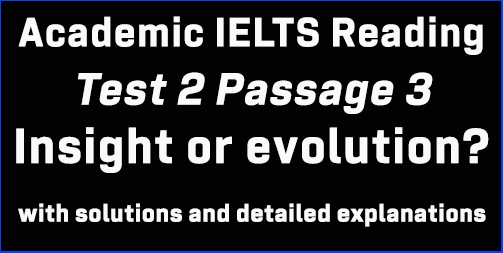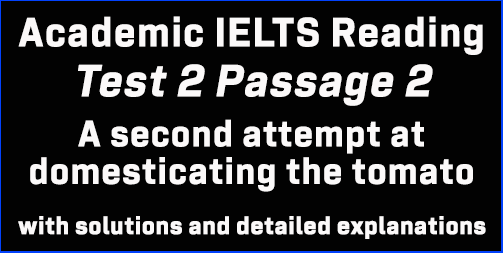IELTS Academic Reading: Cambridge 4 Test 1 Reading passage 2; What Do Whales Feel?; with best solutions and best explanations
This Academic IELTS Reading post focuses on solutions to IELTS Cambridge 4 Reading Test 1 Reading Passage 2 titled ‘What Do Whales Feel?’. This is a targeted post for IELTS candidates who have great problems finding out and understanding Reading Answers in the AC module. This post can guide you the best to understand every Reading answer quite easily. Finding out IELTS Reading answers is a gradual process, and this post will assist you in this respect.
IELTS Cambridge 4 Test 1: AC Reading Module
Reading Passage 2: Questions 15-26
The headline of the passage: What Do Whales Feel?
Questions 15-21: Completing table: NO MORE THAN THREE WORDS
[In this type of question candidates need to fill in the gaps in a table with NO MORE THAN THREE WORDS. Skimming and scanning, both reading skills are essential for this question-type.]
Question no. 15:
| SENSE | SPECIES | ABILITY | COMMENTS |
| Taste | all | poor | nerves linked to their ___________ are undeveloped |
Keywords for the question: taste, nerves, liked to, undeveloped
The answer to this question can be found in the final lines of the first paragraph. The writer says here, “ .. . .. .. Similarly, although at least some cetaceans have taste buds, the nerves serving these have degenerated or are rudimentary.”
Here, some cetaceans = all species, nerves serving these = nerves linked to their taste buds, degenerated = undeveloped, rudimentary = basic or poor,
So, the answer is: taste buds
Question no. 16:
| SENSE | SPECIES | ABILITY | COMMENTS |
| Vision | ___________ | yes | probably do not have stereoscopic vision |
Keywords for the question: vision, probably, do not have, stereoscopic vision,
In paragraph no. 3, lines 5-7 say, “ .. .. .. . However, the position of the eyes so restricts the field of vision in baleen whales that they probably do not have stereoscopic vision.”
So, the answer is: baleen/ the baleen whales
Question no. 17:
| SENSE | SPECIES | ABILITY | COMMENTS |
| Vision | dolphins, porpoises, | yes | probably have stereoscopic vision __________ and __________ |
Keywords for the question: vision, dolphins, porpoises, probably, have, stereoscopic vision,
Have a look at the first few lines of paragraph no. 4, “On the other hand, the position of the eyes in most dolphins and porpoises suggests that they have stereoscopic vision forward and downward.”
So, the answer is: forward, downward (in either order)
Question no. 18:
| SENSE | SPECIES | ABILITY | COMMENTS |
| Vision | ____________ | yes | probably have stereoscopic vision forward and upward |
Keywords for the question: vision, probably, have, stereoscopic vision, forward, upward,
In paragraph no. 4, lines 2-4 say, “ . . .. . Eye position in freshwater dolphins, which often swim on their side or upside down while feeding, suggests that what vision they have is stereoscopic forward and upward. .. . ..”
So, the answer is: (the) freshwater dolphin(s)
Question no. 19:
| SENSE | SPECIES | ABILITY | COMMENTS |
| Vision | bottlenose dolphins | yes | exceptional in __________ and good in air-water interface |
Keywords for the question: vision, bottlenose dolphins, exceptional, good in, air-water interface,
The answer lies in paragraph no. 4, in lines 4-7. Here, the writer says, “ . . . . By comparison, the bottlenose dolphin has extremely keen vision in water. Judging from the way it watches and tracks airborne flying fish, it can apparently see fairly well through the air-water interface as well. .. .. .”
Here, By comparison . .. . has extremely keen vision = exceptional vision, see fairly well through = good in,
So, the answer is: (the) water
Question no. 20:
| SENSE | SPECIES | ABILITY | COMMENTS |
| Hearing | most large baleen | yes | usually use ___________;
repertoire limited |
Keywords for the question: hearing, most large baleen, usually use, repertoire, limited,
In the final paragraph (paragraph no. 6), lines 5-6 say, “ . .. . . Large baleen whales primarily use the lower frequencies and are often limited in their repertoire. .. . … .”
Here, primarily use = usually use, limited in their repertoire = repertoire limited,
So, the answer is: (the) lower frequencies
Question no. 21:
| SENSE | SPECIES | ABILITY | COMMENTS |
| Hearing | __________ whales and
__________ whales |
yes | song-like |
Keywords for the question: hearing, song-like,
The answer can be found in the final paragraph (paragraph no. 6), in lines 6-7. The writer says here, “ . . . Notable exceptions are the nearly song-like choruses of bowhead whales in summer and the complex, haunting utterances of the humpback whales. .. . .”
Here, song-like choruses & haunting utterances = song-like ability,
So, the answer is: bowhead, humpback (in either order)
Questions 22-26: Short answer to open questions (NO MORE THAN THREE WORDS)
[In this kind of question candidates have to answer some questions, only with some conditions like NO MORE THAN THREE/TWO WORDS and/or A NUMBER or, ONE WORD ONLY. Each question has keywords which will lead to the answer. This question type generally follows a sequence.]
Question no. 22: Which of the senses is described here as being involved in mating?
Keywords for the question: being involved in, mating,
The explanation of the sense of touch is given in paragraph no. 2. Here, in lines 5-7, the author of the text says, “ . .. . . This contact may help to maintain order within a group, and stroking or touching are part of the courtship ritual in most species. .. .. .”
Here, stroking or touching = sense of touch, courtship ritual = mating,
So, the answer is: (sense of) touch
Question no. 23: Which species swims upside down while eating?
Keywords for the question: swims, upside down, while eating,
In paragraph no. 4, lines 2-3 say, “ . .. .. Eye position in freshwater dolphins, which often swim on their side or upside down while feeding, .. .. .”
Here, feeding = eating,
So, the answer is: (the) freshwater dolphin(s)
Question no. 24: What can bottlenose dolphins follow from under the water?
Keywords for the question: bottlenose dolphins, follow from, under the water,
To find the answer to this question, we have to look at paragraph no. 4, in lines 4-7, “ . .. By comparison, the bottlenose dolphin has extremely keen vision in water. Judging from the way it watches and tracks airborne flying fish, it can apparently see fairly well through the air–water interface as well. .. . .”
Here, the way it watches and tracks = follow from under the water,
So, the answer is: airborne flying fish
Question no. 25: Which type of habitat is related to good visual ability?
Keywords for the question: habitat, related to, good visual ability,
Have a close look at these lines 2-3 of paragraph no. 5, “ .. . . For example, vision is obviously more useful to species inhabiting clear open waters than to those living in turbid rivers and flooded plains. .. .. .”
Here, vision is obviously more useful = related to good visual ability, inhabiting = habitat,
So, the answer is: clear (open) water(s)
Question no. 26: Which of the senses is best developed in cetaceans?
Keywords for the question: best developed, cetaceans,
The answer can be found in the final paragraph (paragraph no. 6). In lines 1-3, the writer says, “ … .. Although the senses of taste and smell appear to have deteriorated, and vision in water appears to be uncertain, such weaknesses are more than compensated for by cetaceans’ well-developed acoustic sense. .. . ..”
Here, well-developed = best developed,
So, the answer is: (the) acoustic sense
Click here for solutions to Cambridge IELTS 4 Academic Reading Test 1 Reading passage 1
Click here for solutions to Cambridge IELTS 4 Academic Reading Test 1 Reading passage 3




2 thoughts on “IELTS Academic Reading: Cambridge 4 Test 1 Reading passage 2; What Do Whales Feel?; with best solutions and best explanations”